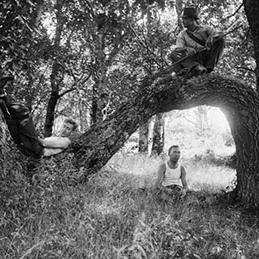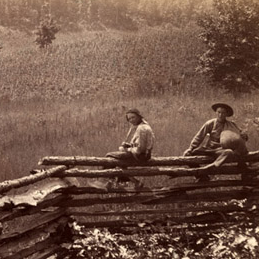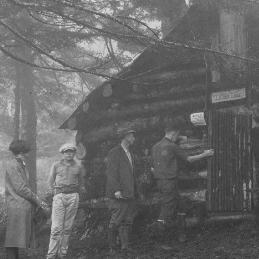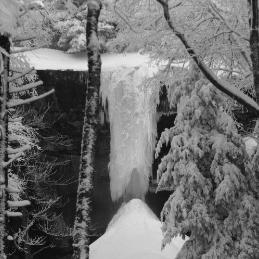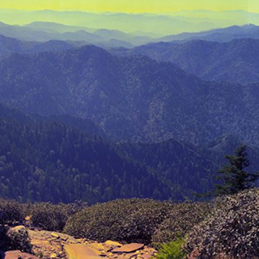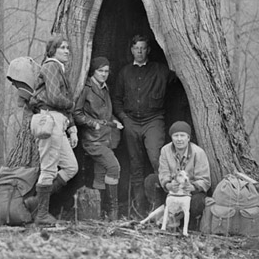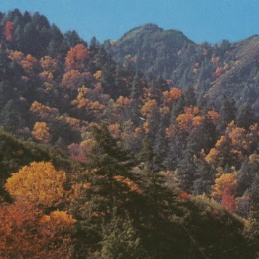Browse
Wild-flowers, Great Smoky Mountains National Park. Gatlinburg, TN: Great Smoky Mountains Natural History Association, 1998.
Wildlife Map of the Great Smoky Mountains National Park. 2nd ed. Reston, VA: American Nature Maps, 1992.
Wildlife Viewing, Great Smoky Mountains National Park. Gatlinburg, TN: Great Smoky Mountains Natural History Association, 1998.
"New Flow: Digital Technology Aiding in Mapping of Smokies' Streams." Knoxville News Sentinel (2012).
Eastern Hemlock Forest Delineation in Great Smoky Mountains National Park (1993-1995). Gatlinburg, TN: Resources Management and Science Division, Great Smoky Mountain National Park, 1995.
Geologic Map of the Great Smoky Mountains National Park Region, Tennessee and North Carolina In U.S. Geological Survey Open File Report. U.S. Department of the Interior, 2005.
Geology of the Great Smoky Mountains, Tennessee and North Carolina In U.S. Geological Survey Professional Paper. Washington, D.C.: U.S. Government Printing Office, 1961.
Geovisualization of Forest Dynamics: Hemlock Woolly Adelgid Damage in Great Smoky Mountains National Park. Athens, GA: Center for Remote Sensing and Mapping Science, Department of Geography, University of Georgia, 2009.
Late-Quaternary History of the Spruce-Fir Ecosystem in the Southern Appalachian Mountain Region In The Southern Appalachian Spruce-Fir Ecosystem: Its Biology and Threats. Gatlinburg, TN: Uplands Field Research Laboratory, 1984.
Location of Areas Within Great Smoky Mountains National Park With A High Dominance of Chestnut During the 1930s and Therefore A High Probability of Present Day Chestnut Regeneration In Technical Report to Fullfill Part of Cooperative Agreement CA-5460-5-8804. Knoxville, TN: University of Tennessee, 1987.
Mapping Elemental Concentrations in Great Smoky Mountains National Park with Lichens. National Park Service Air Quality Division, 1987.
Mapping The Great Smoky Mountains National Park. Reston, VA: U.S. Geological Survey, 1989.
Preliminary Demonstration of Remote Sensing and Other Data to be Utilized in the Regional Resources Basic Inventory for the Great Smoky Mountains National Park (GSPNP) and Region. Department of the Interior, National Park Serice, 1973.
The Spread of Chinese Yam (Dioscorea batatas) In the Great Smoky Mountains National Park. Knoxville, TN, 1993.
Thematic Accuracy Assessment: Great Smoky Mountains National Park Vegetation Map. Great Smoky Mountains National Park, Gatlinburg, TN: National Park Service, 2007.
USGS-NPS Vegetation Mapping Program: Vegetation Classification of Great Smoky Mountains National Park (Cades Cove and Mount Le Conte Quadrangles) In National Vegetation Classification - Southeastern United States. Chapel Hill, NC: The Nature Conservancy, 1999.
Vegetation Disturbance History of Great Smoky Mountains National Park: An Analysis of Archival Maps and Records In Research/Resources Management Report. Gatlinburg, TN: U.S. Department of the Interior, National Park Service, 1985.
Vegetation Map of Great Smoky Mountains National Park Based on Landsat Thematic Mapper Data: Accuracy Assessment and Numerical Description of Vegetation Types. Gatlinburg, TN: National Park Service, 1991.
An Analysis of Topographic Effects on LANDSAT Thematic Mapper Image Using Digital Terrian Data. Knoxville, TN: University of Tennessee, 1988.
Terrain Cover and Shadow Discrimination from Landsat of the Great Smoky Mountains National Park. Knoxville, Tennessee: University of Tennessee, Knoxville, 1981.
Pages
- « first
- ‹ previous
- 1
- 2
- 3
- 4

